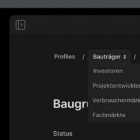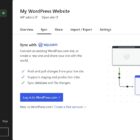We bid goodbye to 2020 in style with the release of WordPress 5.6 and the launch of Learn WordPress. But these weren’t the only exciting updates from WordPress in December. Read on to learn more!
WordPress 5.6 is here
The latest major WordPress release, version 5.6 “Simone”, came out on December 8. The release ships with a new default theme called Twenty Twenty One. It offers a host of features, including:
- Greater layout flexibility
- More block patterns
- Video captioning support
- Auto-updates
- Beta-compatibility for PHP 8.0
- Application password support for the REST API
- Updates to jQuery
In addition, WordPress 5.6 is now available in 55 languages. You can find more information about the release in the field guide, and you can update to the latest version directly from your WordPress dashboard or by downloading it directly from WordPress.org. A total of 605 people hailing from 57 different countries contributed to the development of WordPress 5.6. @audrasjb has compiled many more stats like that, showing what a tremendous group effort this was—they’re well worth a read!
Want to contribute to upcoming WordPress releases? Join the WordPress #core channel on the Make WordPress Slack and follow the Core team blog to learn the latest on WordPress 5.7, which is slated to be out by March 9, 2021. The Core team hosts weekly chats on Wednesdays at 5 a.m. and 8 p.m. UTC.
Watch the State of the Word 2020 recording
State of the Word 2020, the annual keynote address delivered by WordPress co-founder Matt Mullenweg, was streamed online for the first time on December 17. It was followed by a live Q&A from community members all across the world. You can find the stream recording on YouTube, Facebook, and Twitter. The State of the Word video and the Q&A session are also available on WordPress.tv.
Learn WordPress has launched
Learn WordPress, a new free, on-demand WordPress learning resource, launched officially on December 15. It offers workshops, lesson plans, quizzes, and courses for anyone interested in publishing with, building for, or contributing to WordPress. WordPress enthusiasts can also participate in discussion groups focused on specific topics to learn with and from each other.
Want to participate in Learn WordPress? Here are four ways you can do so! Additionally, contributors have launched a discussion on the future of Learn WordPress—feel free to share your thoughts in the comments. To help promote Learn WordPress, check out the Marketing Team’s materials, which detail a range of fun and creative ways to share this new resource.
Give feedback on the Full Site Editing project
Contributor teams have kicked off the Full Site Editing (FSE) outreach program for anyone who is building or maintaining a WordPress site so that they can give feedback on the upcoming FSE feature that will be part of Gutenberg Phase 2. Your feedback will go a long way in improving FSE user flows. To participate, check out the initial testing call on the Make/Test blog and join the #fse-outreach-experiment Slack channel.
Want to follow updates on the FSE project? Check out this blog post. You can find 2020 updates to the FSE project in the Make/Core blog.
BuddyPress 7.0 “Filippi” and 7.10 are now available
BuddyPress version 7.0 went live on December 9. Its features include:
- New administration screens to manage Member and Group Types
- New BP blocks for posts and pages
- A default profile image for network sites
- Improved BuddyPress Noveau support for the Twenty Twenty One theme.
A BuddyPress maintenance release (version 7.1) launched on December 21.
Want to provide feedback or suggestions for BuddyPress? Share your comments on the announcement posts for 7.0 or 7.1. If you find a bug, please report it in the support forums.
Gutenberg 9.5 and 9.6 released
The Core team launched version 9.5 and 9.6 of Gutenberg last month. Both versions include several improvements to FSE flows, bug fixes, and feature upgrades. Version 9.5 introduces features like full height alignment and support for font sizes in the code block. Version 9.6 includes features like the ability to drag blocks from the inserter and a vertical layout for buttons.
Want to get involved in building Gutenberg? Follow the Core team blog, contribute to Gutenberg on GitHub, and join the #core-editor channel in the Making WordPress Slack group.
Further Reading
Have a story that we should include in the next “Month in WordPress” post? Please submit it using this form.
Like this:
Like Loading…





